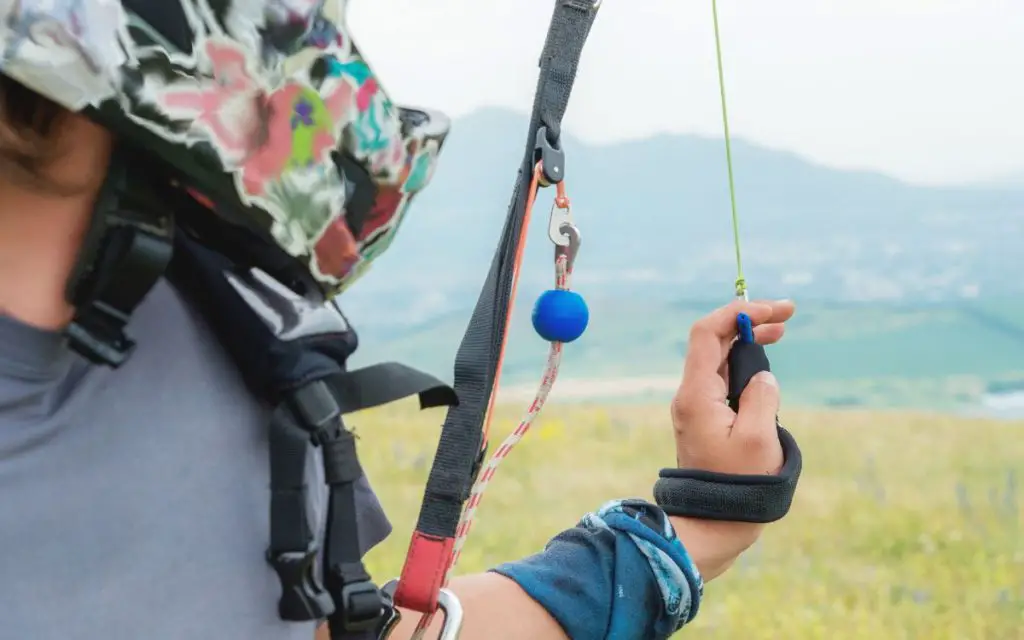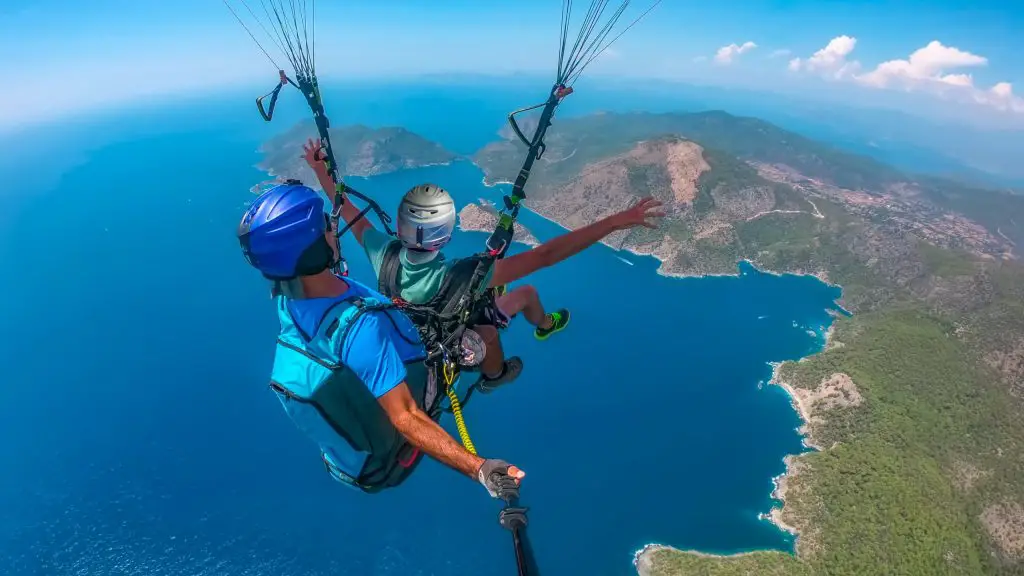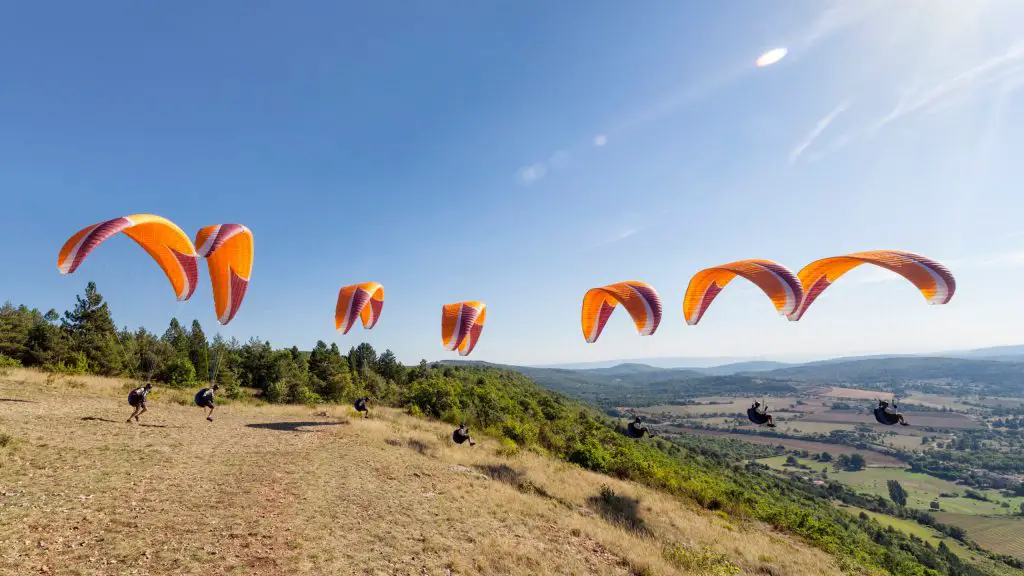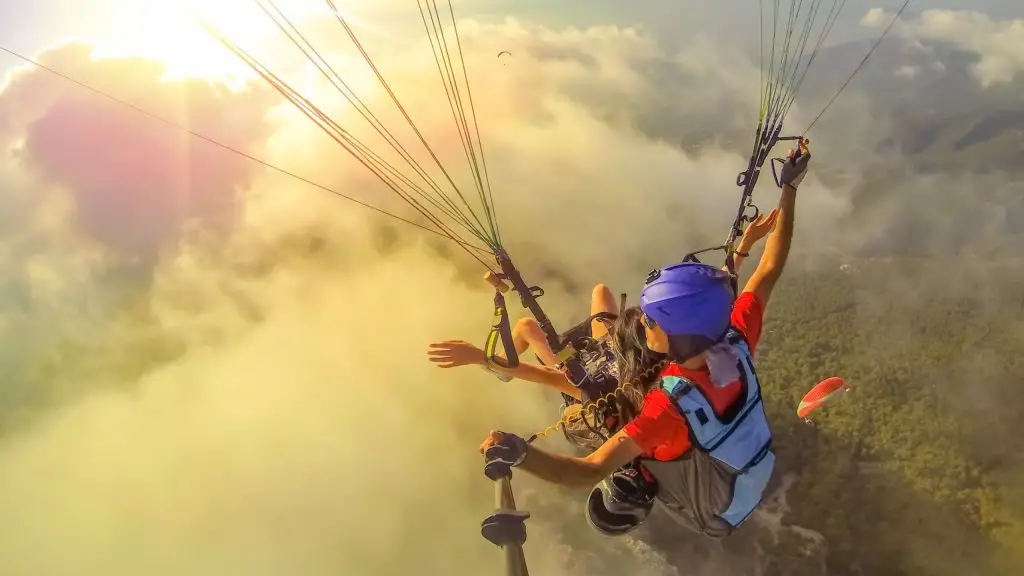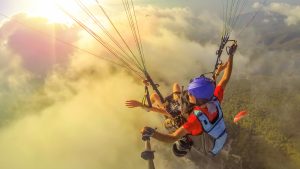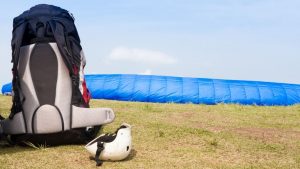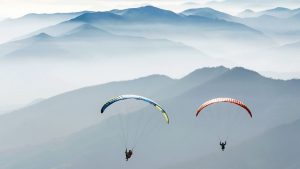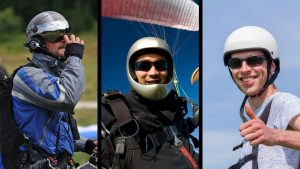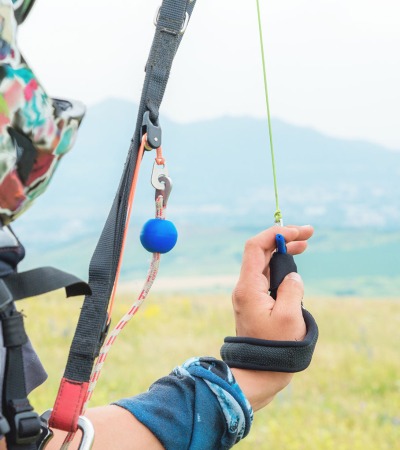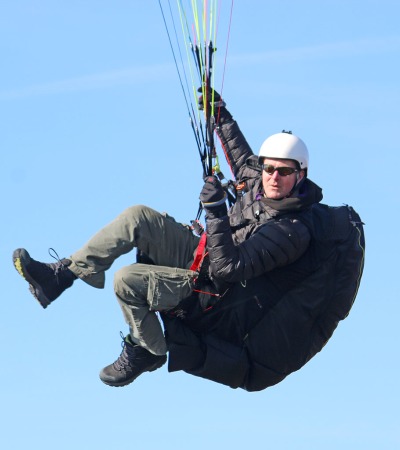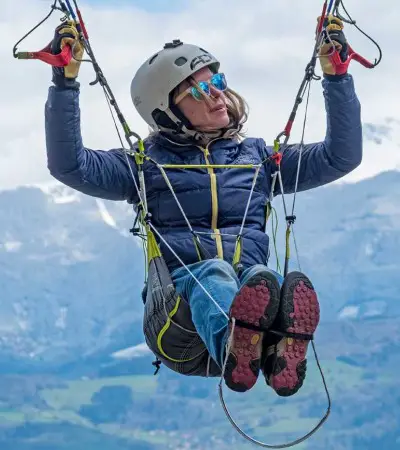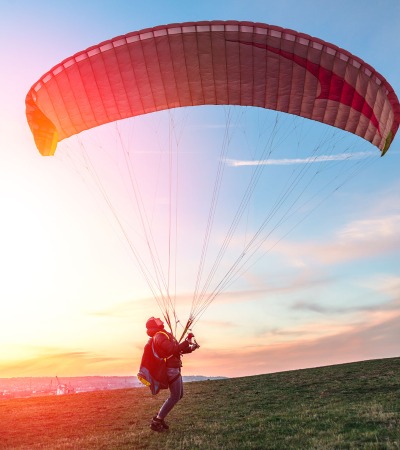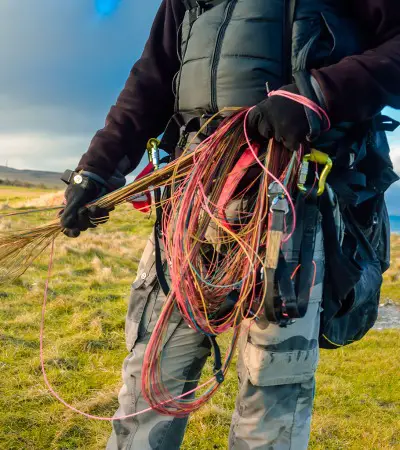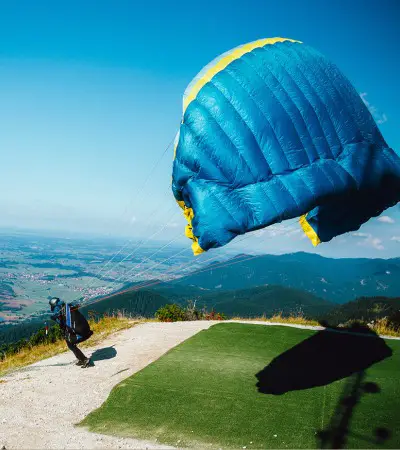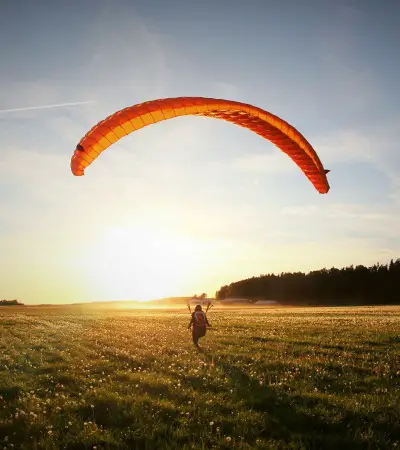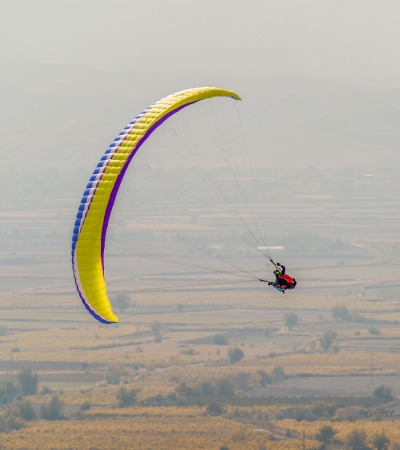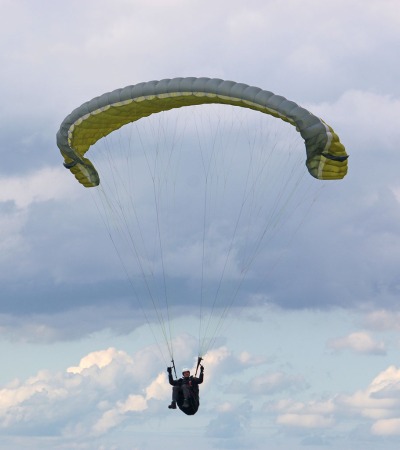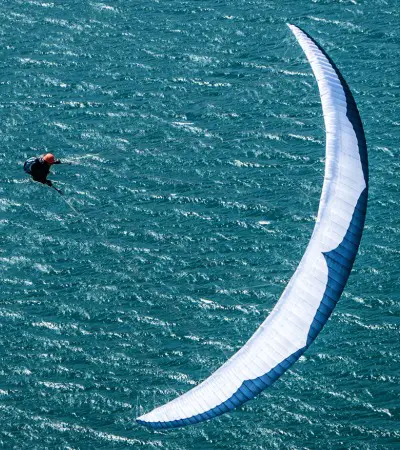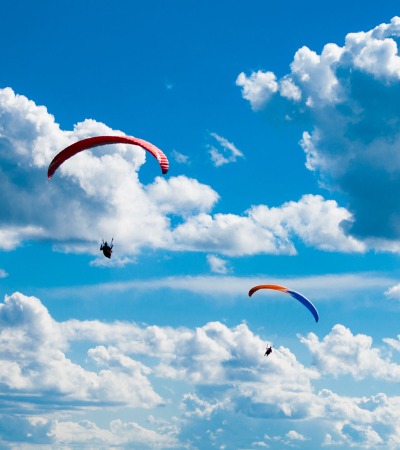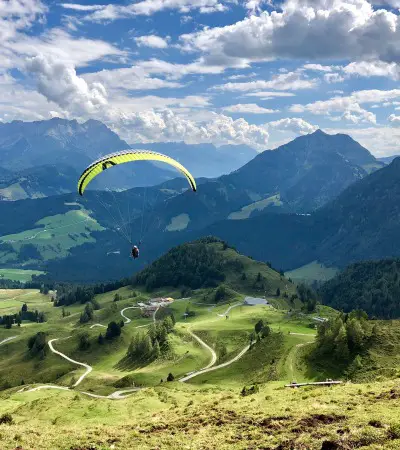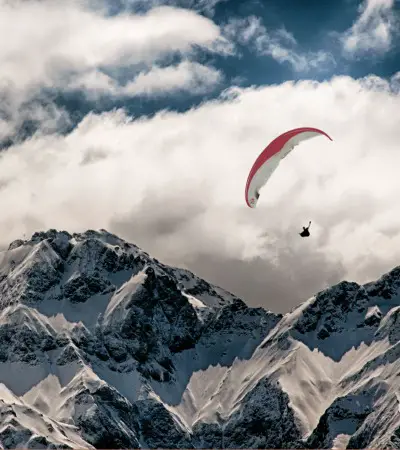Welcome to ProParaglide a website built for paragliders by paragliders. This website is here to share information to help everyone have a great time in the air.
Paragliding Equipment
Obviously, a huge part of paragliding is your gear. Choosing the right equipment for your skills, objectives and preferences is a complicated task and usually costs thousands of dollars. This is why making the right choice, in the beginning, is so important.
Making sure the paragliding wing that you want to buy matches your skill level, that it will perform well for the type of flying you want to do and is technically correct for you is not an easy thing to do. We have a number of guides here to help you out so that you will be able to find the right paragliding gear to suit your needs.
Paragliding Equipment cost?
Paragliding gear costs vary depending on the gear that you will be looking for if it’s used equipment or not, and the brand that you want to buy.
Normally a basic set of used paragliding equipment for a beginner that includes a harness, wing, and helmet for a beginner would start around $3000 USD.
Paragliding equipment packages
buying paragliding equipment in a package can be a great thing to do whether you are buying used gear or new as you can usually buy a kit cheaper than buying the individual parts. It can also make the whole process much simpler.
That does not mean that this is always the case though and it is possible that you will be able to get a cheaper deal by buying individual pieces separately.
Learning to Paraglide
Learning to Paraglide is an amazing experience and one of those amazing things that you will never forget. Every Pilot can remember their first solo flight. When they ran towards the edge of the hill and felt the wing above them lift them off their feet. It’s an exhilarating feeling when you finally take to the sky yourself. The sense of freedom is amazing!
Paraglide training is not a small thing that you can just start casually if you expect to be able to be flying from mountains around your home. Normally you will need 2-4 days of training on the ground to learn how to control your wing and learn all the equipment.
After this, you will then perform a number of flights with direction from your instructors and only after about 2 weeks of training will you be doing a whole flight unassisted.
Getting started with paragliding
- Go and do an introductory tandem paragliding flight.
This is an extremely important step as you may take a flight and find that it’s not the kind of thing that you are looking for. Or you may find that the heights don’t bother you at all as is the case with many new pilots. - Enrol in your first training course, usually 1 week.
This step is the normal next step, you will be doing a lot of work on the ground learning to control your wing, so don’t expect to be flying too soon. Approach this with patience and it will pay off later. - Progress to flying independently, 2nd week of training.
This is where you will be flying as much as you can. Listen to your instructors and try to complete as many drills and exercises as you can. - Read some books (optional, but highly recommended).
There are many great books on paragliding that will help you significantly improve your skills.
Paraglider Controls
Becoming a better pilot is all about controlling your wing better. Controlling it in different conditions, sites, maneuvers, and different mental states. The more of these situations that you are exposed to safety and the more you are able to learn about your gear and yourself the better pilot you will become.
Basic Paraglider Controls
Paraglider Takeoff and Landing
Takeoff and Landing are two of the most important times for a pilot because these are the times you are closest to the ground. This means that the time you have to react to any issues is significantly reduced.
The takeoff will also greatly affect the rest of the flight, good control of the wing and a smooth takeoff will allow you to have an enjoyable flight. A takeoff with problems will only mean that the pilot is starting their flight in a bad frame of mind, increasing the chance of mistakes in-flight.
In-Flight Paragliding Skills
Controlling your paraglider in flight is imperative. Flying to your abilities but balancing this with pushing yourself to experience more conditions is the balance all pilots need to reach. Perfecting your in-flight skills will help you have fun and stay safe in the sky.
Paragliding Preparation and Analysis
Planning and preparation are paramount for having a good flight. Knowing your flying site, or being able to read the air at a new site will mean you will be climbing out to cloud base faster than the others while avoiding any turbulence. Take this a step further when you go cross-country where you need to read the weather as it evolves through the day and read your surroundings to stay in the air.
Paraglider Safety
Safety is a big question that every new pilot asks and anyone that tries paragliding. and it is a big point that paragliding schools, associations, clubs, and pilots all around the world are working to improve all the time as there are real risks that every pilot and passenger takes when their feet leave the ground.
Paraglider FAQ’s
Paraglider Speed – How fast are paragliders?
Paragliders usually have a “trim speed” of around 40km/h. This equates to around 25mph. But they also have a “speed bar” that is used to lower the angle of attack of the wing. essentially sacrificing lift for more speed allowing them to reach speeds of up to 55km/h or 35mph.
How do Paragliders Work?
Paragliders work with the same basic principles as any airplane or glider. their main difference is that they have a “soft” inflatable wing rather than a firm rigid one.

